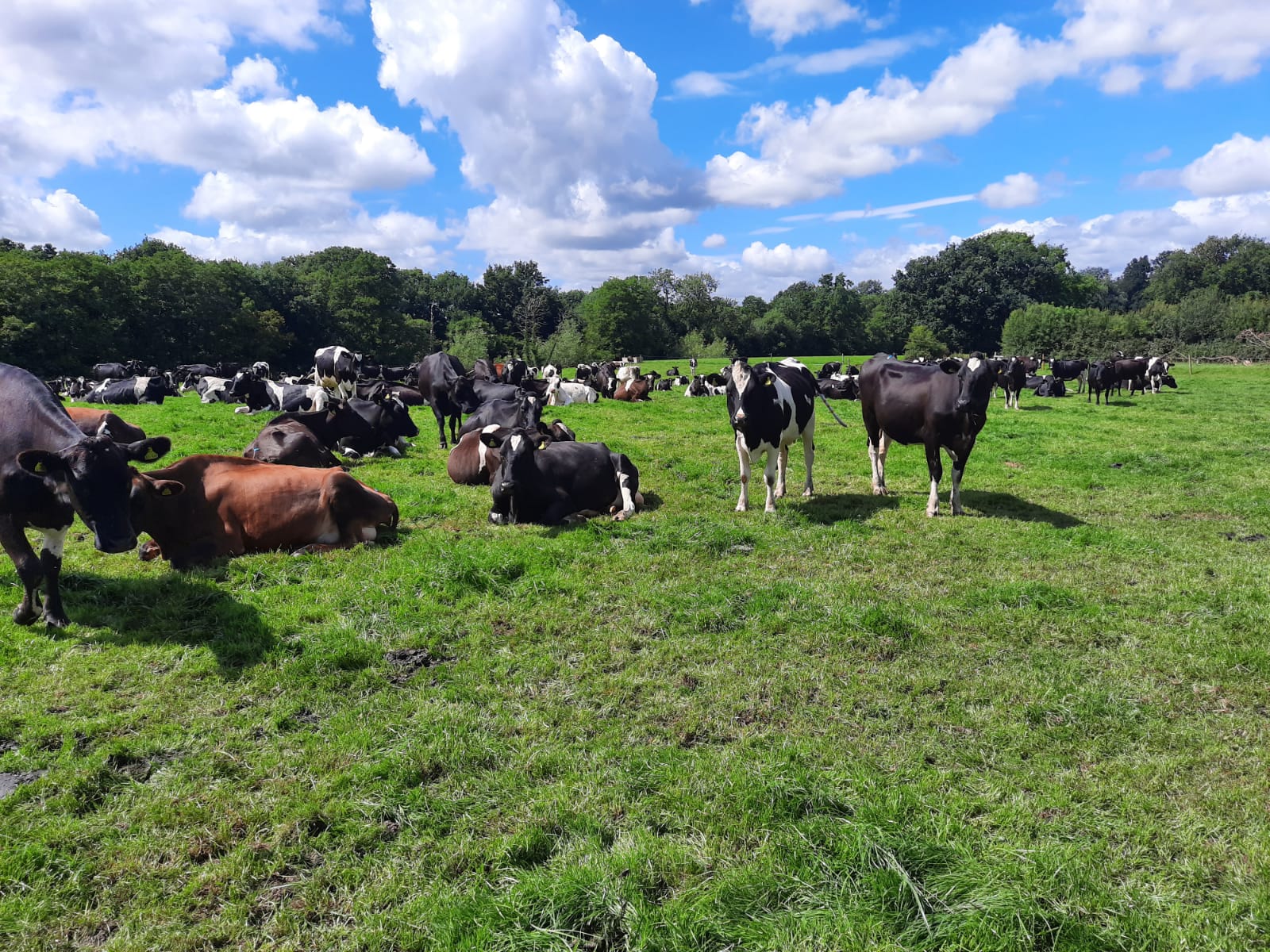Meet Forage for Knowledge contributor Phil Asbury
Friday, 31 July 2020
Phil Asbury has been measuring grass for 13 years for his 212-cow spring block herd in Cheshire – this year has had its challenges.
The business
Phil took on the tenancy of Clive Hall Farm in 1999 and entered into a contract-farming agreement with Grasslands Farming in 2007.
The farm
Rainfall: 850 mm (34”)
Soils: heavy clay loam
Farm topography: undulating
64 ha grazing platform
4 ha silage grass
The cows
212 New Zealand crossbred Friesians. Heifers are sent away when weaned at 90–100 kg to the company’s youngstock unit in Derbyshire, returning to calve down at two years. Spring block, starting on 1 February for 12 weeks. The herd averages 5,500 litres, producing 3,900– 4,000 litres from forage.
What’s the grazing year been like?
“Apart from late April/early May, it’s been a phenomenal grass-growing year, with growth rates not below 100–110 kg DM/ha,” says Phil. “May did get very dry, but we managed to maintain covers quite well and fed more corn. We were getting to drought, with growth in the last week of May tumbling to 45 kg, and we thought we would have to feed silage. We got rain in the nick of time.”
A stormy spring following a wet winter meant more drainage maintenance just to keep things running. And while cows went out day and night on 5 February, torrential rain put them back indoors for 3–4 weeks. “We only have cubicles for 150. It has cost us,” admits Phil.
May also saw the cows with pica – licking soil, plastic, brick ends – because of a lack of phosphorus in the grass. This disappeared once it rained and grass was able to take up phosphorus again. However, milk yields fell because cows weren’t eating enough grass. Phil thinks there may also be a sting in the tail for fertility: “We took the bulls out on Friday 24 July and PDs in September will be interesting,” he says.
What are your plans for autumn?
“We don’t have enough forage stocks yet. We need 300 t and have made 100 t off the platform and will make a further 50 t, then buy the rest. Because it’s for dry cows, 10.5–10.8 ME silage will do the job.”
Phil is considering autumn grazing with reference to not carrying too-high covers into winter. Due to a lack of housing, he needs to balance keeping cows out longer without affecting spring growth rates.
“We used to do local B&B, but TB has been a massive headache, so we are keeping cows at home. I would love to grow fodder beet, but we don’t have enough light land in the rotation. I start the last round in early October at 2,600 kg DM/ha and keep cows out till late November. We don’t get heavy frosts or snowfalls, so grass overwinters well, but it is very slow-growing in spring,” he explains.
What grazing goals do you have?
“As the farm is pretty well set up, I’m looking more at clover to reduce nitrogen inputs and learning more about soil. I’d like to understand about nutrition, pH and unlocking minerals – ultimately to grow more grass – and because environmental pressures are coming to our door.”


